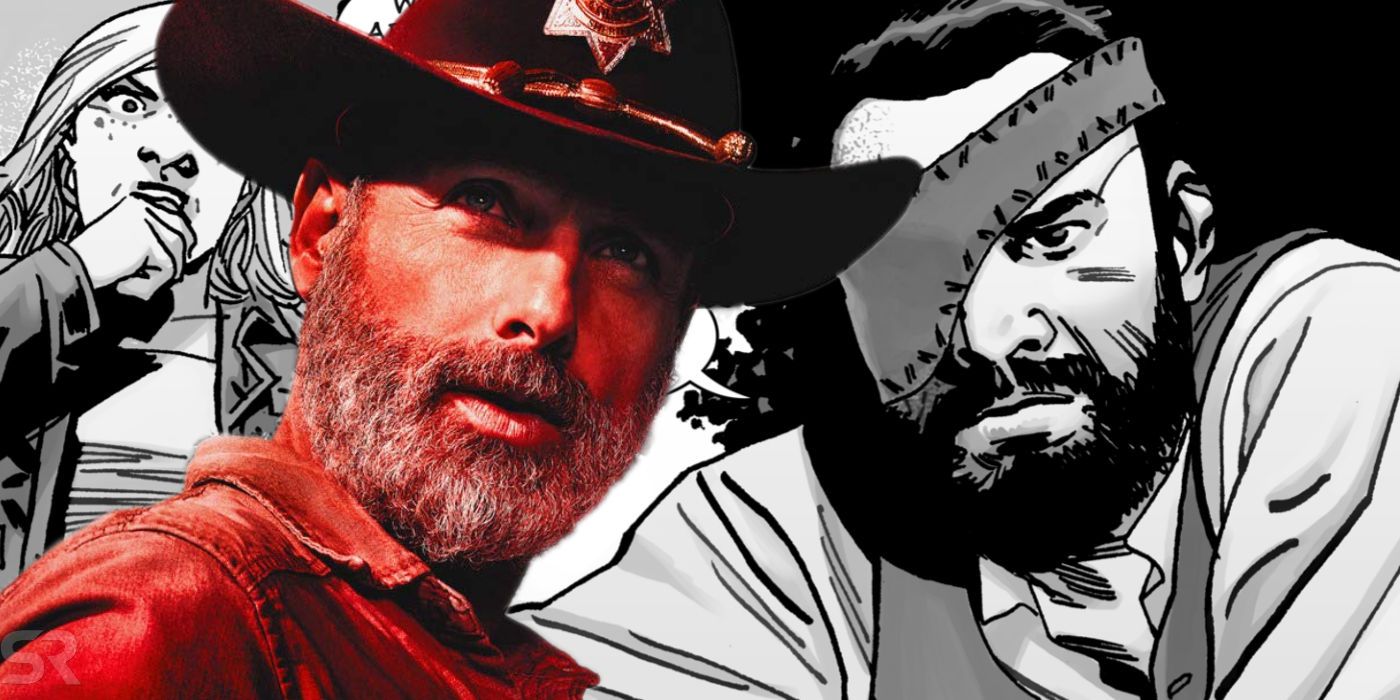Warning! SPOILERS for ahead The Walking Dead #193.
The Walking Dead #193 brings Robert Kirkman's long-running zombie series to an end, but its ending is one that The Walking Dead TV series actually did first. AMC's The Walking Dead has always drawn inspiration from the Image Comics series, sometimes even directly adapting events from the comics for the screen. This time, however, it works the other way around, with the comics appearing to draw inspiration from The Walking Dead season 9.
The surprise ending to The Walking Dead comic was only announced the day before its release, coming as a total shock to both fans and retailers. Recent issues of The Walking Dead were building towards a climactic turn of events, coming to a head in issue #192, but most still believed the series had many issues yet to go. Image even released covers and solicitations for upcoming issues! Turns out all that marketing was just a ruse, though, as The Walking Dead #193 really is the comic book's finale.
The Walking Dead #193 is as an epilogue, jumping ahead many years in order to reveal the fates of its characters and their post-apocalyptic world. Following the shocking and tragic death of Rick Grimes, issue #193 picks up with an adult Carl and his wife, Sophia, raising their daughter, Andrea, in an idyllic farm house. It's been years since the Trials - the official term The Walking Dead introduces for the zombie outbreak - and society, though still lagging behind technologically, has more or less returned to normal. The message of this final issue is clear: the world is now a safer place thanks to Rick. There's even a statue dedicated to him at the Commonwealth, commemorating the rousing speech he gave there the day he was killed. The ending to The Walking Dead comics is, therefore, a hopeful one, but it's also, strangely, a similar ending to what the TV show did when they featured their own surprise time jump in season 9.
At the midpoint of The Walking Dead season 9, the series jumps forward in time following the "death" of Rick. Instead of a couple decades, though, it's only about six years, but the result is roughly the same. Just as with The Walking Dead #193, this time jump focuses on exploring a safer, more established society that has Rick to thank for being so. Instead of following Carl as an adult, the AMC series instead follows a young Judith who is no longer a toddler but a child of about 10 years old. And while audiences know Rick isn't actually dead (and will even return in three Walking Dead TV movies), the characters don't know this and they mourn his death all the same. The Walking Dead season 9 went on to explore how the survivors would carry on without Rick, honoring him and continuing to strive for the better future he was trying to build.
The ending for The Walking Dead comic books and the season 9 time jump are by no means exactly the same, but the similarities are there. In fact, in light of the The Walking Dead comics' ending, the aftermath of Rick's "death" and the ensuing time jump on the TV series almost come across like a dress rehearsal for the comic book's epilogue. And while it's highly unlikely that Kirkman and his team got the idea for their ending from the AMC series (surely, this ending had been planned for years), The Walking Dead TV show still (sort of) did it first.
The Walking Dead season 10 returns to AMC this fall.


